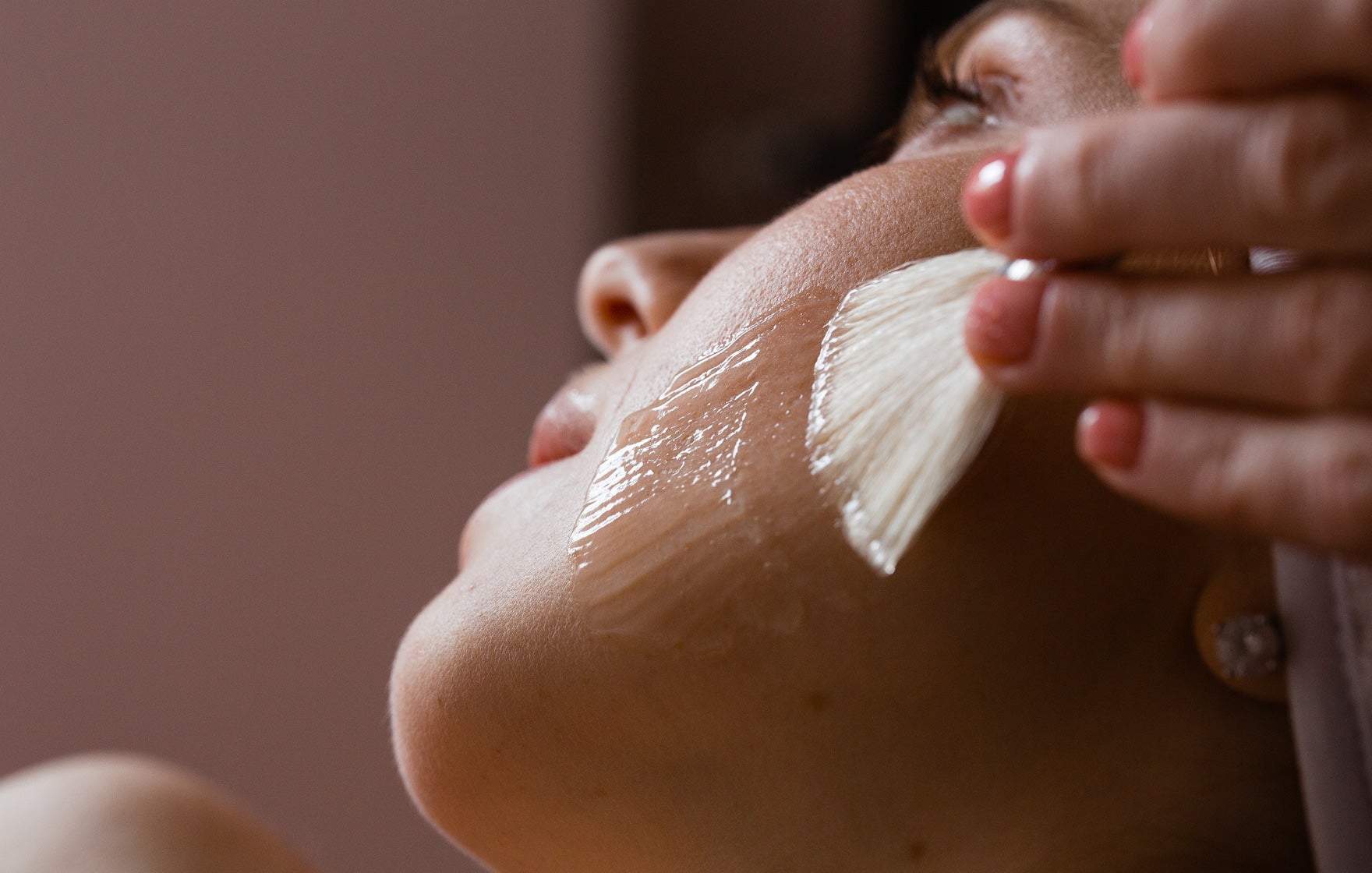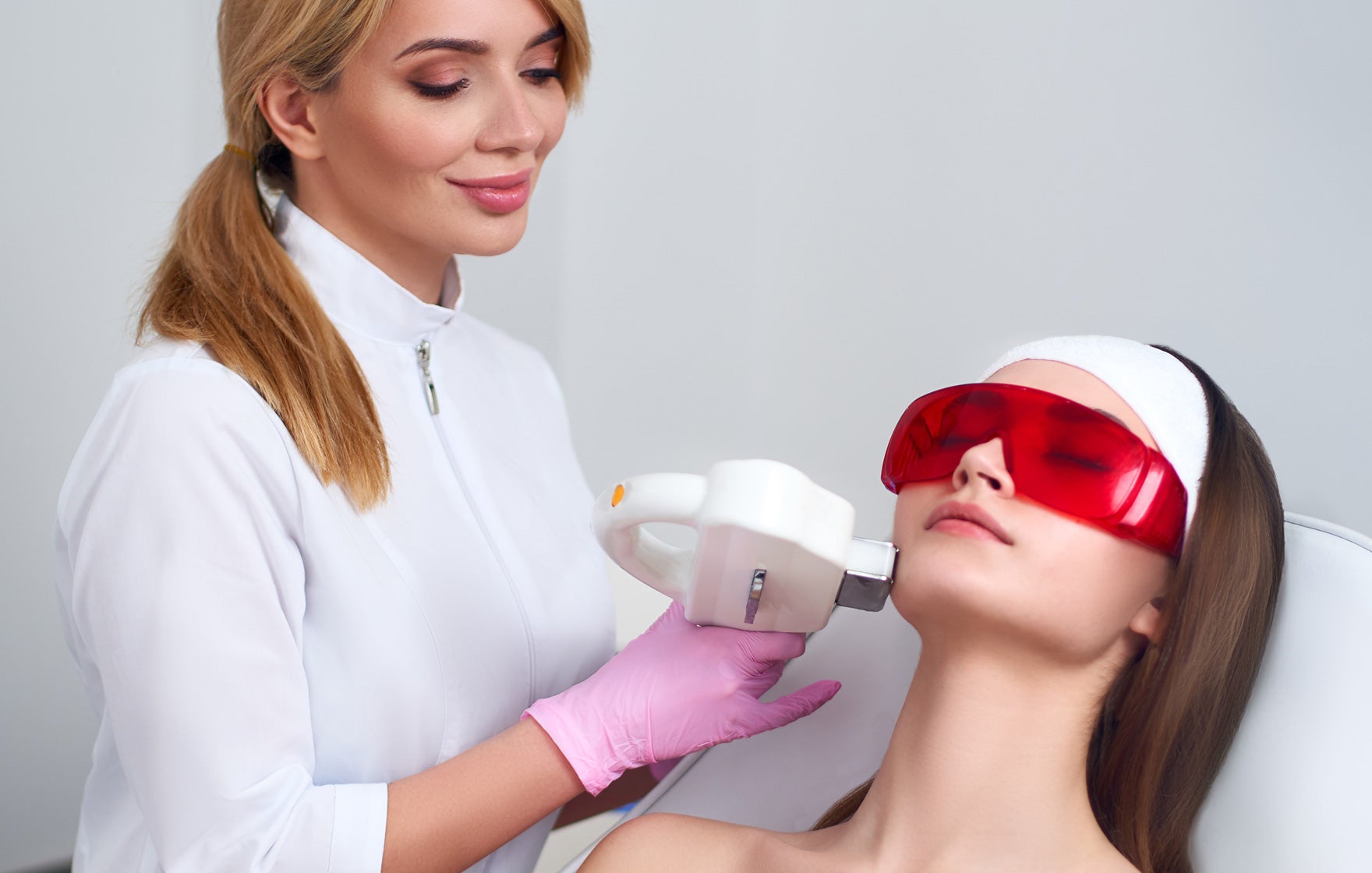
Collagen is immensely important for the skin. A good supply of collagen in the skin provides structure and support and simply makes the skin firm and youthful. Not surprisingly, there are an array of creams, food supplements and aesthetic treatments that promise to increase the collagen content of your skin. But what collagen treatments are there? Should you take a pill or do a laser treatment for face? Or should you use some other treatment that claims to have a skin tightening effect? Read the article to find out.
Collagen for skin: Different regulations make things confusing
When so many treatments seem to do the same thing, it is hard to understand the difference between them and their actual effect on your skin. Part of this confusion has to do with the fact that they fall under different regulations. The US Food and Drug Administration (FDA) classifies food supplements as food, and creams, lotions and skin serums as cosmetics. Medical authorities in other countries have a similar approach. Companies selling food and cosmetics don’t have the same requirements to prove their claims. The consequence is that a cream manufacturer can claim a cream has a skin tightening effect, even if you have to use a microscope to see that skin tightening.
Medical devices fall under stricter regulations
If you search for a laser treatment for face, you will probably be able to find some sort of study. Lasers, IPLs, radiofrequency and other energy-based devices, are often classified as medical device. They generally fall under stricter regulations so, most likely, you will be able to find some sort of study on the effect of these devices, for example skin tightening.
Collagen for skin – creams
If you are looking for a face cream or lotion to increase the collagen production in your skin, your best option could be to choose a product that contains vitamin A and its derivates retinaldehyde and tretinoin (different versions based on vitamin A). These active ingredients have been shown in scientific studies to stimulate collagen production in the skin as well as reducing enzymes that break down collagen.1 Vitamin A and its derivatives can have side effects such as irritation and flaking skin. Consult with a dermatologist or a clinic to get guidance on what suits your skin type.
Unfortunately, as cosmetics is not a very regulated industry, it is difficult for us consumers to know whether a specific cream is better than another, as you often don’t know how much it contains of the active ingredient in question. Imagine that you have a 1000 kg tank in a manufacturing plant and you just dust over extremely small amounts of an active ingredient, so little that it will practically have no effect whatsoever. Why would anyone do that?
First of all, active ingredients are expensive. But as the industry is not so regulated, you can just dust some retinol in the big tank and still claim the finished cream stimulates collagen production. Therefore, you might want to check how much retinol a product really contains. Again, consult a dermatologist or a specialist clinic to find the best option. It is also worth remembering that creams will not have a dramatic skin tightening effect or make you look decades younger. To repeat, if skin tightening remedies were that easy, few of us would have sagging skin.
Collagen for skin – food supplements
Food supplements come in all sorts – pills, bars, powders and drinks. There are many scientific studies on collagen supplementation, both animal studies and studies on humans, and its effect on the skin. The collagen often comes in the form of hydrolysates or peptides to improve absorption and is derived from various animal or non-animal sources.
Studies on humans have shown that collagen supplements improve for example skin hydration, collagen density and collagen deposition.2 Some of the food supplements studied have also contained other nutrients, which makes it difficult to assess to what extent the studied effect was due to collagen. But as with creams, if a food supplement would have dramatic effects on skin tightening and skin firmness, few would have sagging skin.
Collagen for skin – peels
Peels come in different strengths. Peels that you can do at home often contain small particles or enzymes that gently remove dead skin cells on the skin surface to make it temporarily smoother. There are also chemical peels that have a more pronounced ablative effect and that reach deeper skin layers (with ablative means removal or destruction).
The purpose of chemical peels is to induce a controlled damage of the skin, to destroy living cells and coagulate membrane proteins. This controlled damage will induce an inflammatory response, followed by regeneration and repair of the skin, which could have a skin tightening effect and restore the dermal architecture. The deeper the peel, the better the effect on skin renewal, however, there will also be an increased risk of side effects such as hyperpigmentation and infections.1
Consult with a qualified clinic or healthcare practitioner and make sure you understand the risks and benefits before considering a treatment.
Collagen for skin – energy-based devices
There is an increasing number of energy-based devices on the market that use different technologies to stimulate collagen production in the skin – IPL, lasers, fractionated lasers, radiofrequency, ultrasound and so on. Although they are based on different technologies, they have similar effects on the skin.
An ablative laser treatment for face has a similar effect on the skin as peels, as it removes top skin layers. Radiofrequency, ultrasound devices, non-ablative lasers or a fractionated laser treatment for face use heat to denaturalize dermal collagen below the skin surface (with denaturalize means changing the structure of a protein). Thereby the treatment induces a controlled form of wound healing response and skin tightening – just like peels, but without the same disruption of the skin surface.1
IPL and laser treatment for face use light of a specific wavelength. IPL devices filter out specific wavelengths whereas lasers emit the specific wavelength in question. A fractionated laser treatment for face delivers an effect in a pixelated fashion, which is gentler to the skin surface with less downtime. However, just as with peels, the more damage, the greater the effect, so they might not be as effective as an IPL or laser treatment for face. With more damage also comes a higher risk of side effects such as hyperpigmentation, infection and scarring.1
Radiofrequency produces an electrical current inside the skin, which generates heat. Ultrasound is another technology to heat the skin below the surface to induce a denaturalization of collagen and a following wound healing response and skin renewal.
If you are considering a laser treatment for face or any other energy-based device treatment, consult a qualified healthcare practitioner and make sure that you fully understand the risks and benefits of the treatment.
Collagen for skin – injectable treatments
Unlike peels and energy-based devices, the purpose of injectable treatments is not to induce a controlled damage and a following wound healing response in the skin. Instead, they stimulate collagen production directly in the dermis by injecting microparticles of a so-called collagen biostimulator. The microparticles will stimulate collagen renewal over the course of several months. The biostimulator particles will slowly degrade and disappear from the skin while the new collagen remains.
The original collagen stimulator, Sculptra®, uses poly-L-lactic acid to induce new collagen formation.3-5 Other collagen stimulators use for example calcium hydroxylapatite, a major constituent of bones and teeth, to stimulate collagen formation.
According to a clinical study, Sculptra increases collagen type I by as much as 66% after 3 months.4 Another study showed that 86% of those treated continued to show improvement up to 25 months after the last treatment.6 If you are searching for a collagen for skin treatment with noticeable and long-lasting results, Sculptra could be something for you. As with all other collagen treatments, remember to always consult a qualified healthcare practitioner and make sure you understand all benefits and risks of the treatment.
Continue reading: How do collagen stimulators work and how do they rebuild collagen naturally? Find out in this article.
References
- Ganceviciene R. et al, Dermatoendocrinol. 2012;4(3):308–319.
- Vollmer DL., Int J Mol Sci. 2018 Oct; 19(10): 3059.
- Stein P, Vitavska O, Kind P, Hoppe W, Wieczorek H, Schürer NY. The biological basis for poly-L-lactic acid-induced augmentation. J Dermatol Sci. 2015;78(1):26–33.
- Goldberg D, Guana A, Volk A, Daro-Kaftan E. Single-arm study for the characterization of human tissue response to injectable poly-L-lactic acid. Dermatol Surg. 2013;39(6):915–922.
- Sculptra Aesthetic injectable poly-L-lactic acid. Instructions for Use. GaldermaLaboratories. 2016.
- Brandt FS et al., AesthetSurg J. 2011;31: 521–528.



